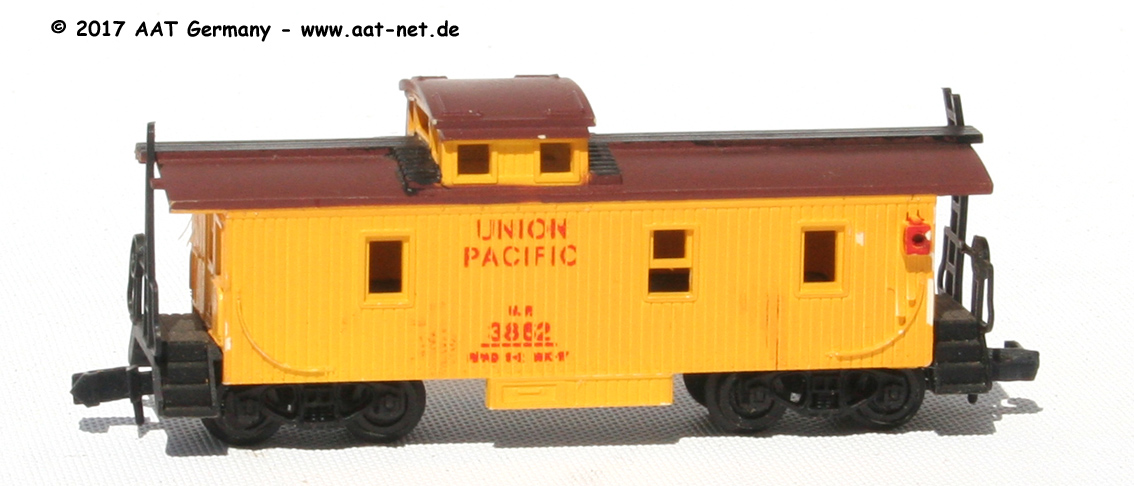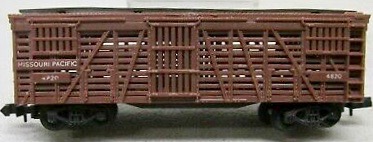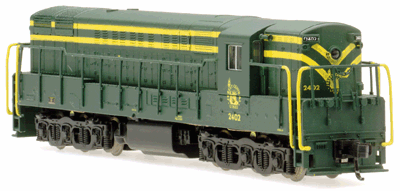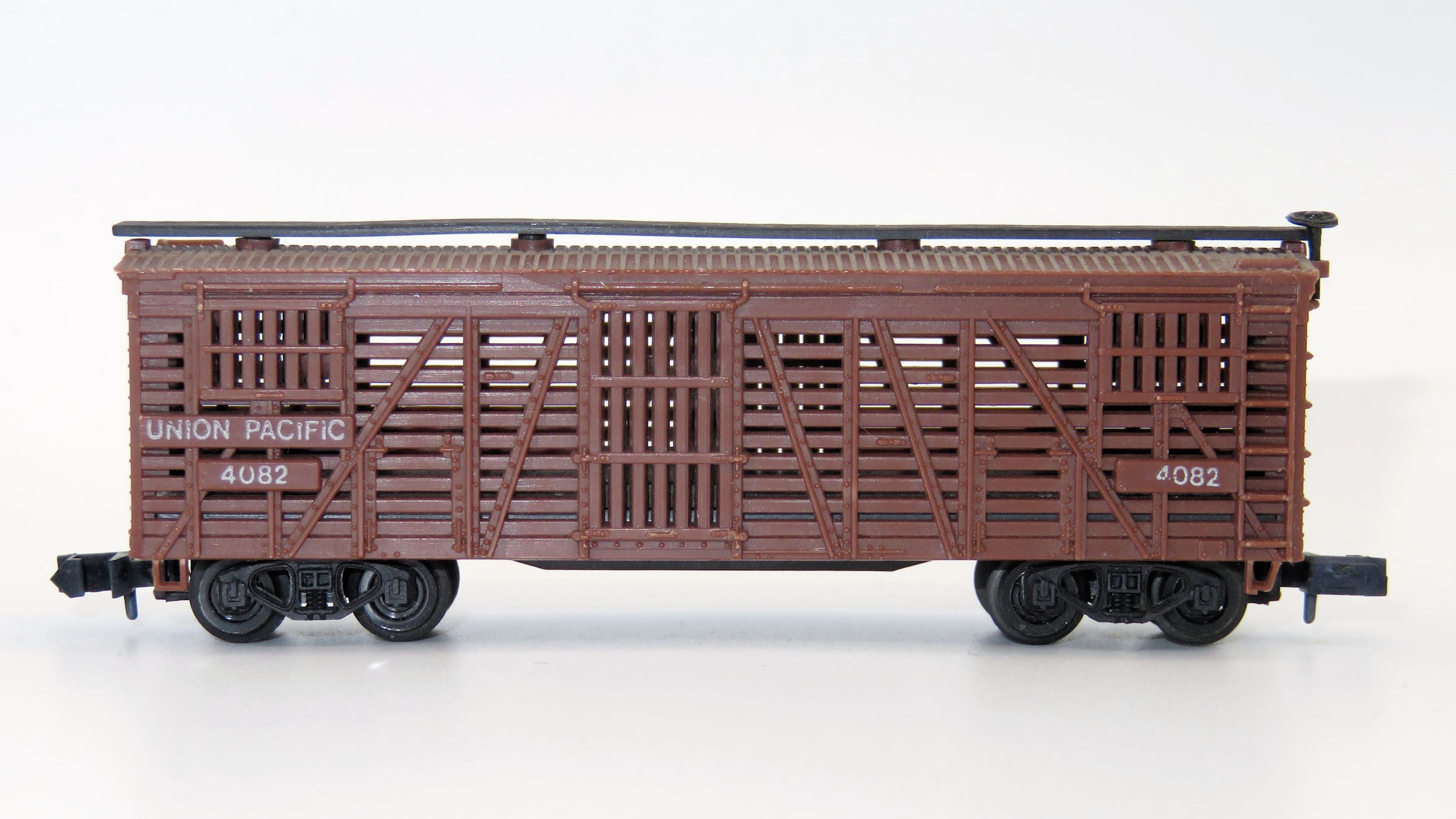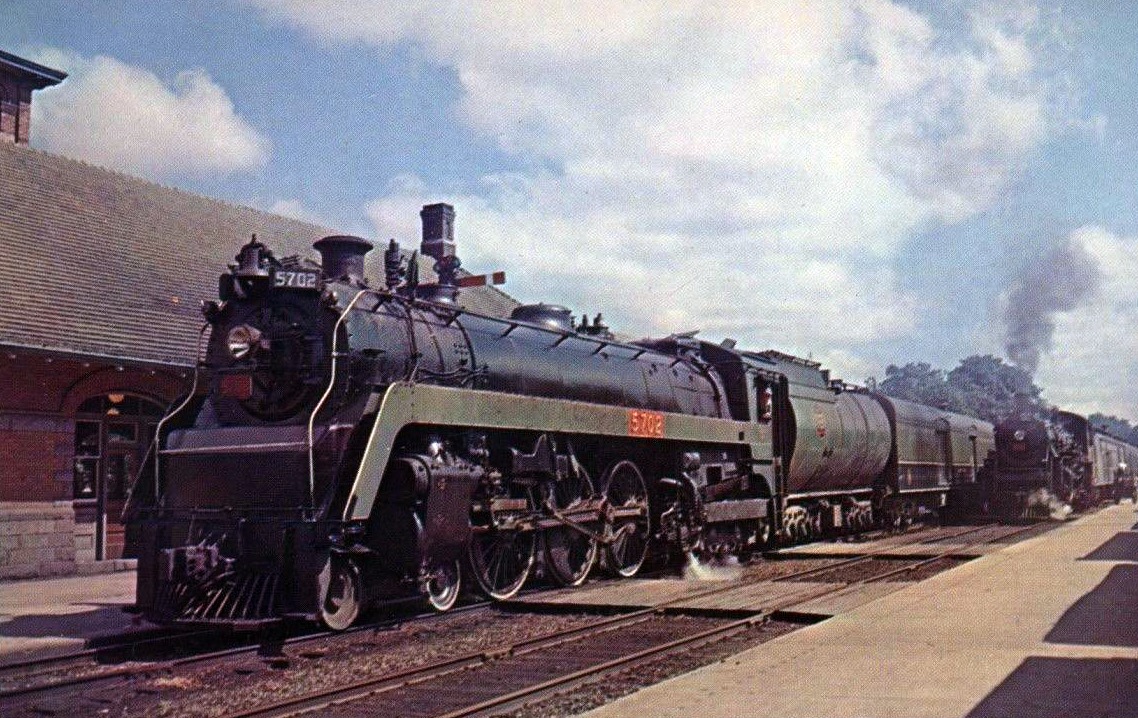Model Information: From 1969 to 1994 this model was made for Con-Cor by Kato under contract. The early Katos were a bit sketchy, but they were extensively re-designed in 1975 and the newer version runs a lot better. While not of the same caliber as Kato's later 2-8-2 Mikado, this 1975 steam engine engine is nevertheless an impressive model, much better than its contemporaries from Lima and Rivarossi. In 1994, Con-Cor started production of a new model in China that is of similar quality to the 1975 Kato model and also runs quite well. The Kato-made models are stamped 'Con-Cor Japan' on the bottom.
Prototype History: Under the Whyte notation for the classification of steam locomotives, 4-6-4 represents the wheel arrangement of four leading wheels, six powered and coupled driving wheels and four trailing wheels. In France where the type was first used, it is known as the Baltic while it became known as the Hudson in most of North America.
The 4-6-4 tender locomotive was first introduced in 1911 and throughout the 1920s to 1940s, the wheel arrangement was widely used in North America and to a lesser extent in the rest of the world. The type combined the basic design principles of the 4-6-2 Pacific type with an improved boiler and larger firebox that necessitated additional support at the rear of the locomotive. In general, the available tractive effort differed little from that of the Pacific, but the steam-raising ability was increased, giving more power at speed. The 4-6-4 was best suited to high-speed running across flat terrain. Since the type had fewer driving wheels than carrying wheels, a smaller percentage of the locomotive's weight contributed to traction, compared to other types. Like the Pacific, it was well suited for high speed passenger trains, but not for starting heavy freight trains and slogging on long sustained grades, where more pairs of driving wheels are better.
The first 4-6-4 in the United States of America, the J-1 of the New York Central Railroad, was built in 1927 to the railroad’s design by the American Locomotive Company (ALCO). There, the type was named the Hudson after the Hudson River.
From Wikipedia
The 4-6-4 tender locomotive was first introduced in 1911 and throughout the 1920s to 1940s, the wheel arrangement was widely used in North America and to a lesser extent in the rest of the world. The type combined the basic design principles of the 4-6-2 Pacific type with an improved boiler and larger firebox that necessitated additional support at the rear of the locomotive. In general, the available tractive effort differed little from that of the Pacific, but the steam-raising ability was increased, giving more power at speed. The 4-6-4 was best suited to high-speed running across flat terrain. Since the type had fewer driving wheels than carrying wheels, a smaller percentage of the locomotive's weight contributed to traction, compared to other types. Like the Pacific, it was well suited for high speed passenger trains, but not for starting heavy freight trains and slogging on long sustained grades, where more pairs of driving wheels are better.
The first 4-6-4 in the United States of America, the J-1 of the New York Central Railroad, was built in 1927 to the railroad’s design by the American Locomotive Company (ALCO). There, the type was named the Hudson after the Hudson River.
From Wikipedia
Road Name History: The United States Bicentennial was a series of celebrations and observances during the mid-1970s that paid tribute to historical events leading up to the creation of the United States of America as an independent republic. It was a central event in the memory of the American Revolution. The Bicentennial culminated on Sunday, July 4, 1976, with the 200th anniversary of the adoption of the Declaration of Independence.
The plans for the Bicentennial began when Congress created the American Revolution Bicentennial Commission on July 4, 1966. Initially, the Bicentennial celebration was planned as a single city exposition (titled Expo '76) that would be staged in either Philadelphia or Boston. After 6½ years of tumultuous debate, the Commission recommended that there should not be a single event, and Congress dissolved it on December 11, 1973, and created the American Revolution Bicentennial Administration (ARBA), which was charged with encouraging and coordinating locally sponsored events. David Ryan, a professor at University College Cork, notes that the Bicentennial was celebrated only a year after the humiliating withdrawal from Vietnam in 1975 and that the Ford administration stressed the themes of renewal and rebirth based on a restoration of traditional values, giving a nostalgic and exclusive reading of the American past.
From Wikipedia
The plans for the Bicentennial began when Congress created the American Revolution Bicentennial Commission on July 4, 1966. Initially, the Bicentennial celebration was planned as a single city exposition (titled Expo '76) that would be staged in either Philadelphia or Boston. After 6½ years of tumultuous debate, the Commission recommended that there should not be a single event, and Congress dissolved it on December 11, 1973, and created the American Revolution Bicentennial Administration (ARBA), which was charged with encouraging and coordinating locally sponsored events. David Ryan, a professor at University College Cork, notes that the Bicentennial was celebrated only a year after the humiliating withdrawal from Vietnam in 1975 and that the Ford administration stressed the themes of renewal and rebirth based on a restoration of traditional values, giving a nostalgic and exclusive reading of the American past.
From Wikipedia
Brand/Importer Information: Con-Cor has been in business since 1962. Many things have changed over time as originally they were a complete manufacturing operation in the USA and at one time had upwards of 45 employees. They not only designed the models,but they also built their own molds, did injection molding, painting, printing and packaging on their models.
Currently, most of their manufacturing has been moved overseas and now they import 90% of their products as totally finished goods, or in finished components. They only do some incidental manufacturing today within the USA.
Important Note: The Con-Cor product numbering can be very confusing. Please see here in the article how to properly enter Con-Cor stock numbers in the TroveStar database.
Currently, most of their manufacturing has been moved overseas and now they import 90% of their products as totally finished goods, or in finished components. They only do some incidental manufacturing today within the USA.
Important Note: The Con-Cor product numbering can be very confusing. Please see here in the article how to properly enter Con-Cor stock numbers in the TroveStar database.
Item created by: RoadRailer on 2017-01-27 12:43:58
Last edited by: Alain LM on 2020-06-04 02:11:17
If you see errors or missing data in this entry, please feel free to log in and edit it. Anyone with a Gmail account can log in instantly.
Last edited by: Alain LM on 2020-06-04 02:11:17
If you see errors or missing data in this entry, please feel free to log in and edit it. Anyone with a Gmail account can log in instantly.







